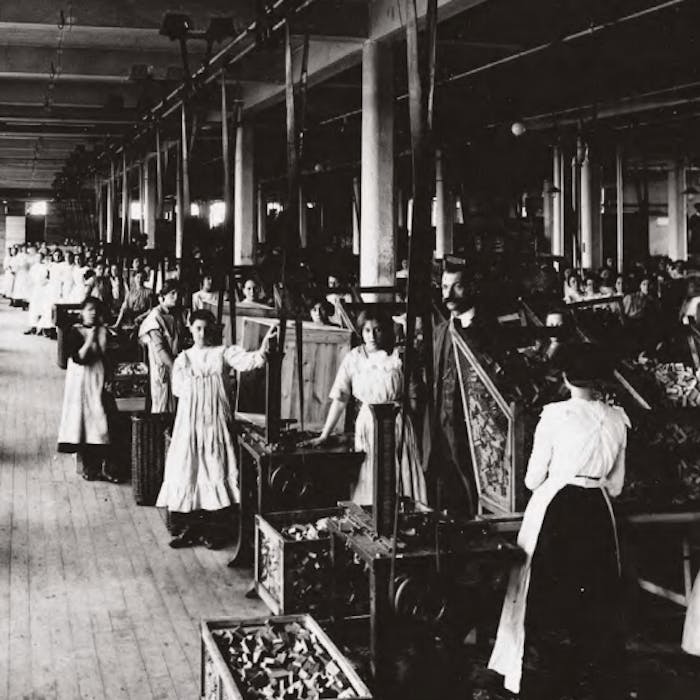
Bryant & May - the match factory which sparked a strike
The Bryant & May match factory, located in Bow, was for a hundred years an important industry, employer and landmark in East London. The dangerous production processes led to it being the scene of a famous strike by the female workers in 1888 over their life-endangering working conditions.
Bryant & May was formed in 1843 by two Quakers, William Bryant and Francis May, to trade in general merchandise. In 1850 the company entered into a relationship with a Swedish match maker to capture part of the market for the 250 million matches then used in Britain every day.
In 1861 they relocated the business to a three-acre site, on Fairfield Road, Bow, where an old candle factory was demolished, and a model brick factory built in the mock-Venetian style popular at the time. It was heavily mechanised and included twenty-five steam engines to power the machinery. On nearby Bow Common, the company built a lumber mill to make splints from imported Canadian pine.
By the 1880s Bryant & May employed nearly 5,000 people, most of them female and Irish, or of Irish descent.
There were three unsuccessful strikes between 1881 and 1886 over low wages, the working conditions and a punitive fine structure – whereby workers had their pay docked for minor misdemeanours such as having an untidy workbench, talking or having dirty feet. Many of the workers were bare-footed as shoes were too expensive. The women and girls involved in boxing up the matches even had to pay the boys who brought them the frames from the drying ovens, and had to supply their own glue and brushes.
Another issue was “phossy jaw”- as the vapour of white phosphorus used on the matches destroyed the bones of the jaw through an extremely painful and disfiguring disease, with dying bone tissue rotting away accompanied by a foul-smelling discharge. Workers would have to have parts of their jawbone removed to avoid death, and if a worker complained of having toothache, they were told to have the teeth removed immediately or be sacked.
The issues came to a head when one of the workers was dismissed in July 1888, and a strike was called.. Social activist Annie Besant became involved, as did Charles Bradlaugh MP. Hit by a great deal of publicity and criticism, the management eventually agreed to the strikers’ terms, which included having a separate room to eat meals, away from the contamination of the factory floor. In 1901 the employers announced that the factory would no longer use white phosphorus, but the alternative safer red phosphorus meant more expensive, less poisonous, matches. Parliament eventually passed an Act prohibiting the use of white phosphorus in matches after 31 December 1910.
The Bryant and May factory was rebuilt in 1910 with additional safety features, but eventually closed in 1979, and has since been converted into flats.
Further reading
Links to external websites are not maintained by Bite Sized Britain. They are provided to give users access to additional information. Bite Sized Britain is not responsible for the content of these external websites.
